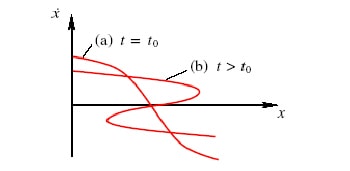Anyone who has been out on a summer picnic will know to their cost that showers can very suddenly appear if there are lots of fluffy-looking "cumulus" clouds around. Rain, however, starts to fall much more slowly from the featureless, grey "stratiform" clouds that often blanket the entire sky. Now a team of physicists and mathematicians from the UK and Sweden claims to have solved this meteorological mystery, which they attribute to the formation of "fold caustics" -- regions of space in cumulus clouds where neighbouring water droplets are moving with different velocities (Phys. Rev. Lett. 97 048501).

Meteorologists think that rains starts falling suddenly from cumulus clouds because they are formed when the air in the atmosphere is rising. These convection currents lead to small-scale turbulent motion that encourages microscopic water droplets to coalesce and form raindrops. Indeed, computer simulations have shown that the rate of collision can dramatically increase when the intensity of turbulence exceeds a certain threshold. Unfortunately, no-one has been able to explain why the rate of collision should suddenly rise so mysteriously in this way.
Now, however, Michael Wilkinson, Bernhard Mehlig and Vlad Bezuglyy from the Open University and Göteborg University think they have an answer. They have developed a simple analytical theory of the movement of particles in random flows. But because faster-moving droplets can overtake slower droplets, the theory predicts the formation of “fold caustics”, in which different droplets at the same position in space can end up moving at different velocities (see figure).
This relative motion encourages collisions, the researchers say. Indeed, the theory predicts a sudden increase in collision rate when the “Stokes number” — a dimensionless parameter that contains information about the turbulence in the cloud and the radius of the droplets — rises above a threshold value. “If a sufficiently large part of the rain cloud has a high enough turbulence intensity, then our theory explains why rainfall can start in a matter of minutes — as observed in everyday life,” says Mehlig.





